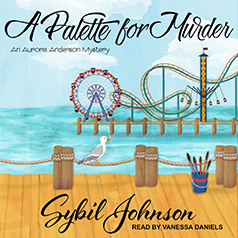Beauty of the Fan Convention
By Naomi Hirahara
I got a new perspective on mystery book conventions when I was describing them to my friend Martin, a punk rock aficionado and former zine publisher. “Oh, that’s your fan base, right?” he said, commenting that an entertainer always wants to be where their fans are.
 |
| New Yorker SJ Rozan with Naomi |
But as I was attending Left Coast Crime Reno as one of its guests of honor (unbelievable – but that’s another post), I changed my thinking on how I would approach the experience. I would still reserve time to hang out with my writer friends, whether it would be a one-on-one walk by the river in downtown Reno or a bowling party held by my publisher. But more than any other mystery convention, I decided that I needed to hang out with fans, or readers.
 |
| Bowling for beers and laughs |
Oh, well, I thought. There probably would be only a handful of people attending so it could be a small, intimate affair. I was even finding it difficult to recruit my fellow writers to participate, so my expectations were low. But about 30 minutes before the session, people started walking in and filling seats. It didn’t stop. The fans were curious and perhaps they also wanted to get away from panels, too.
 |
| Improv with Glen Erik Hamilton, left, and Tyler Dilts. |
I purposely planned on doing simple games that I had done before; at least I understood how they worked. I was delighted to see volunteers from the audience – some of them writers, but many of them fans. It didn’t matter if you weren’t a published author; you got a chance to be on stage and be the center of attention.
 |
| With Angie of Petaluma, CA |
The other guest of honor, William Kent Krueger, also did an improv session with me and afterwards he said, “We should do this at every convention.” I kept hearing that over and over and I do think there are plans to reprise it at next year’s Left Coast Crime (but it doesn’t have to be led by me!).
During the awards dinner (food was excellent, by the way), I hosted a table, and had a chance to talk to readers. One, Angie, I had seen before but I never really had a long conversation. I learned that she was part of a book group which had read my first mystery, SUMMER OF THE BIG BACHI. “We were hooked from then,” Angie said. A resident of Petaluma, she drives an hour to San Francisco to attend the ballet as a season subscriber. Another couple, Dwight and Kathy, were from Riverside, California, and active in the movement to preserve the Harada House, important because the property was used to challenge the alien land law in California that barred Japanese and other Asian immigrants from purchasing land. They were also close friends of literary writer Susan Straight, who won an Edgar for her short story in LOS ANGELES NOIR and a wonderful supporter of my Mas Arai series.
There were many other conversations, an elderly woman who remembered her Japanese American friend disappearing from elementary school during World War ii and no one explaining to her what had happened. Tears came to her eyes and even though she must have been in her eighties, I felt her childhood pain and confusion. I began to realize that as I sometimes feel stereotyped in these settings, I was also stereotyping the attendees. Each has an interesting story to tell, a reason why she or he loves mysteries and fan conventions.
On the last day of the convention, I had an interesting conversation with a long-time convention organizer. We both are very much aware of the aging of the attendees and planners – would there be these types of gatherings, produced by volunteers, in ten years? My friend was unsure. But then younger enthusiasts like Chantelle, author Jay Stringer and Erin Mitchell came to mind. Maybe there’s a future for these fan conventions. I certainly hope so. In the meantime, I plan to take another class in improv this spring. You never know when it will come in handy.
Naomi Hirahara’s final Mas Arai mystery, HIROSHIMA BOY, was published this spring.



























